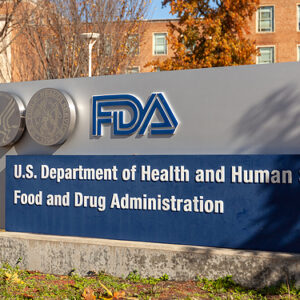By the end of this year, the Center for Tobacco Products at the Food and Drug Administration will have received $7.6 billion in user fees since its formation in 2009. Yet, it remains challenging to identify even one clear public health benefit the FDA can claim for this money. And there is a strong case that it is doing more harm than good.
Around 3,000 cigarette products are on the U.S. market and readily available in every convenience store, gas station and supermarket. The cigarette trade serves more than 30 million American adults with products that cause more deaths than HIV, alcohol, guns, road accidents and illicit drugs combined. FDA regulates these products, but the cigarette trade is largely untroubled by regulation.
Around the beginning of the last decade, a disruptive technology emerged. Vaping began to win converts from smoking and threaten the cigarette trade’s dominance. A recent comprehensive review for the government in England found that “vaping poses only a small fraction of the risks of smoking,” and a recent evidence synthesis suggests that vape products are effective at displacing smoking.
Rather than embrace the huge difference in risks and opportunities for public health, the FDA abandoned any pretense of scientific integrity or ethical policymaking. The FDA joined the clamor against these products, embracing and amplifying the “youth vaping epidemic” panic without ever recognizing the subtleties of youth vaping.
For some young people, vaping can be a diversion from smoking. For others, it is just frivolous experimentation. In the name of protecting youth, the FDA imposed massive regulatory burdens shrouded in vague and ambiguous guidance, leading to opaque, arbitrary and ever-changing evaluation criteria. The result has been legal, regulatory and market chaos. Thousands of products are on the market with no application or no authorization or with denial orders and pending legal action.
None of this has helped young people.
If the FDA had stuck to the law, all but a handful of unremarkable or obsolete vaping products offering a few variations of tobacco flavor would have been removed from the market. It would have shut down the services provided by vape shops, driven vaping underground, and provided regulatory barriers to entry to benefit of the cigarette trade. Many vapers would have returned to smoking.
Paradoxically, the FDA’s unwillingness or inability to enforce its own decisions has saved us from this catastrophe. One failure has protected us from the harmful consequences of another, greater failure.
In July, incoming FDA commissioner Robert Califf recognized the Center for Tobacco Products needed to change. Califf turned for advice to the Reagan-Udall Foundation, which is expected to report in December 2022.
Numerous technical suggestions have been made to make vaping regulations more transparent, efficient and predictable. For example, the FDA could use informal standards to expedite passage through assessment, defer many of the questions about population effect to post-market surveillance, set up a comprehensive surveillance system shared by all suppliers, and expedite the process for authorizing incremental improvements to products that have already been authorized.
But before that, a strategic adjustment is required. FDA needs to change its regulatory philosophy and rethink what it is trying to achieve. It needs to move away from overreacting to the dreams of activists and use its science to deepen its understanding of youth vaping — primarily harmless experimentation with some potentially beneficial diversion from smoking. Then it needs to concentrate on realizing the enormous public health potential as if the lives of 30 million American adult smokers really mattered.


